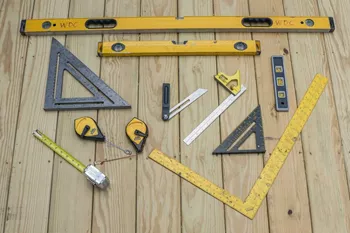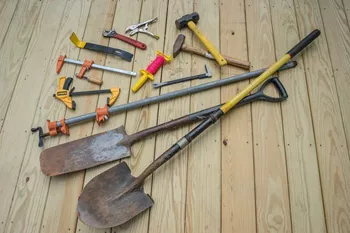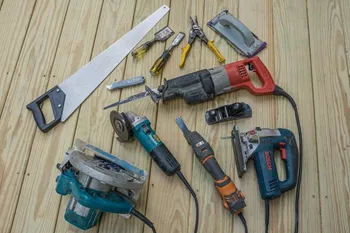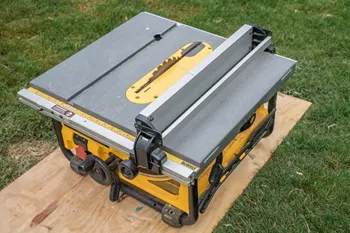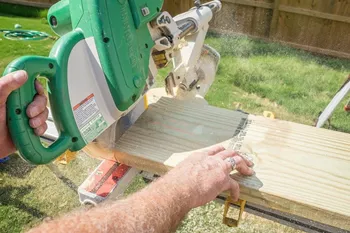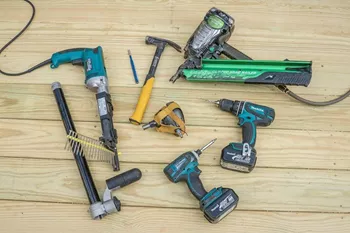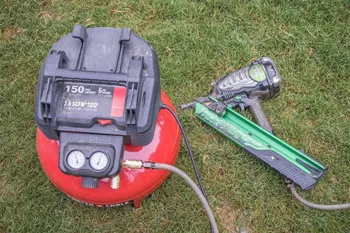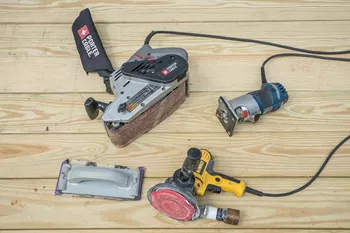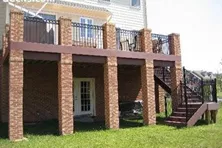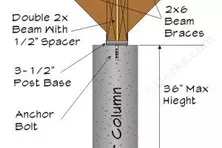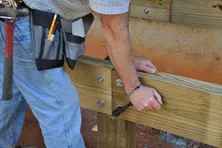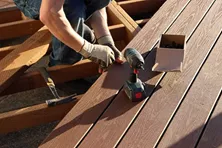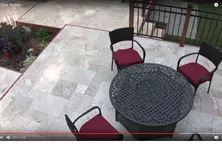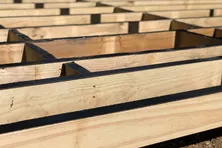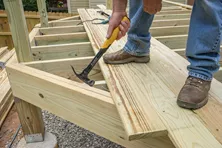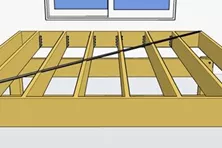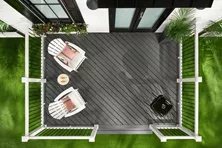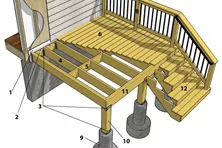As an Amazon Associate, Decks.com earns from qualifying purchases from the links in this post.
Deck Building Tools: What You'll Need
Tools for Layout and Measuring
To build a quality deck, you will check constantly to be sure its parts are level, plumb and square. The following deck tools and equipment will help you with precision and more while you build.Tape Measures & Chalk Lines
Framing and Speed Squares
Excavation and General Tools
For excavating, hand tools can usually do the job, though, you may want to hire a landscaper or rent an earth-moving or post hole-digging machine for very large jobs.Shovels
Pipe and Squeeze Clamps
Pry Bars and Wrenches
Tools for Cutting
Building a deck does not call for cuts as precise as those for cabinetry, but your cuts should be very accurate.Circular Saw
Jigsaw
Reciprocating Saw
Knives and Shears
Table Saw
Tools for Fastening
A power nailer works much faster and easier than a hammer, and prevents denting often produced by mishits when hand nailing. Still, a hammer is often used for driving joist-hanger nails and for getting into tight areas. A nail set extends your reach when nailing. A teco nailer, which attaches to an air compressor like a power nailer, can also be used for driving small nails for joist hangers and other hardware.An 18- or 20-volt cordless drill has become one of the most popular fastening tools. An impact driver makes it easier to drive screws and bolts very firmly, and if you plan to install decking with face screws, consider using a speed driver. This tool features a clip you can load with screws in order to drive a lot of them quickly, and has an extender that enables you to do the job while standing up.
Tools for Shaping and Smoothing
Use a router with a roundover bit or a decorative bit to ease sharp edges and creative custom looks. A belt sander is the most powerful sanding tool, but should be used carefully so you don’t dig into the wood. A random orbit sander is also effective at smoothing and removing stains, but is safer to use. A hand sander is also a viable option to get the job done, too.This page contains affiliate links. If you choose to purchase after clicking a link, Decks.com may receive a commission at no extra cost to you.
How to Decorate Deck Support Columns
Browse some examples of decorative deck support posts for tall decks.
How to Install Concrete Support Deck Posts & Columns
Learn how to install concrete deck piers to support your deck frame. Use cardboard form tubes to extend your footings above grade.
How to Build a Freestanding Deck
You may need to build a freestanding deck if you can't attach a ledger board to the house. Learn how to build a self-supporting deck.
How to Install Decking Over Existing Concrete Slab, Patio, or Porch
Discover the best techniques to build a deck over concrete, ensuring proper drainage and stability, while creating a beautiful outdoor space.
What to Consider When Building A Wrap-Around Deck
Looking to add a wrap-around deck to your home but unsure of what the process involves? Check out this guide to learn more about top considerations when building a wrap-around deck.
Tile decking
Installing tile over a standard deck frame in an exterior environment is a recipe for trouble.
More Helpful Resources
Explore Articles by Topic

Footings
Information related to installing frost footings for decks

Framing
Learn structural framing methods

Decking
Learn about wood and composite decking materials

Stairs
An in-depth look at the complex issue of how to build stairs

Railings
How to install guardrails and handrails to meet IRC code

Features
An overview on water drainage, benches, planters and lights

Design
The basics of deck design

Planning
Learn about permits and working with contractors

Porches & Patios
Build a covered deck to enjoy all seasons

Ledger
Proper attachment techniques

Care
Maintain your deck to maintain your investment

Materials
An overview on water drainage, benches, planters and lights
Why is Joist Protection so Important for Your Deck?
If you’ve ever seen a piece of wood left out in the weather for any period of time, you know what happens: decay. Whether through wet rot, insect damage, or mildew, the fibers begin to break down.
Framing a Deck Parallel to a House
Learn about an alternative framing method that allows you to install your decking perpendicular to the house and makes the deck free standing.
How to Brace a Swaying Deck
Learn how to install a diagonal brace on your deck frame to prevent racking. Check out our detailed image.
What to Consider When Building A Wrap-Around Deck
Looking to add a wrap-around deck to your home but unsure of what the process involves? Check out this guide to learn more about top considerations when building a wrap-around deck.
Best Time to Build a Deck
People often wonder when the best time to build a deck is. Learn why building a deck in winter or fall might be your best bet.
Anatomy of a Deck
A comprehensive guide to help you learn the names and understand the functions of every part of your deck.
Explore Articles by Topic

Footings
Information related to installing frost footings for decks

Framing
Learn structural framing methods

Decking
Learn about wood and composite decking materials

Stairs
An in-depth look at the complex issue of how to build stairs

Railings
How to install guardrails and handrails to meet IRC code

Features
An overview on water drainage, benches, planters and lights

Design
The basics of deck design

Planning
Learn about permits and working with contractors

Porches & Patios
Build a covered deck to enjoy all seasons

Ledger
Proper attachment techniques

Care
Maintain your deck to maintain your investment

Materials
An overview on water drainage, benches, planters and lights




